Mathematical Treasure: Fibonacci’s Liber Abaci
Fibonacci, also known as Leonardo of Pisa or Leonardo Pisano, lived around 1170 to 1250. He was responsible for introducing to Europe the Hindu-Arabic numeration system that we use today when he published Liber Abaci in 1202. He also published at least five other works. The Linda Hall Library has a two-volume set, published in 1857, called Scritti de Leonardo Pisano, which translates as The Writings of Leonardo Pisano. This 19th-century edition by Baldassarre Boncompagni is the only complete collection of the surviving works of Fibonacci, and consists of the Latin text with no commentary. Volume 1 contains Liber Abaci, while Volume 2 is titled Practica Geometriae ed Opuscoli (Practical Geometry and Lesser Works). The “lesser” works are Flos, Epistola ad Magistrum Theodorum (a letter to the imperial philosopher Theodorus), and Liber Quadratorum (The Book of Squares).
According to the Dictionary of Scientific Biography, there are 12 surviving manuscript copies of Liber Abaci which date from the 13th through 15th centuries, with only three of the copies complete. In the Introduction to the English translation of Liber Abaci, L.E. Sigler writes, “There exist a number of manuscripts of Liber abaci in Europe which were examined by Boncompagni in preparing his definitive text. The Boncompagni text is complete and unambiguous.”
The following image is the title page of Liber Abaci in volume 1, although with the spelling – Liber Abbaci.
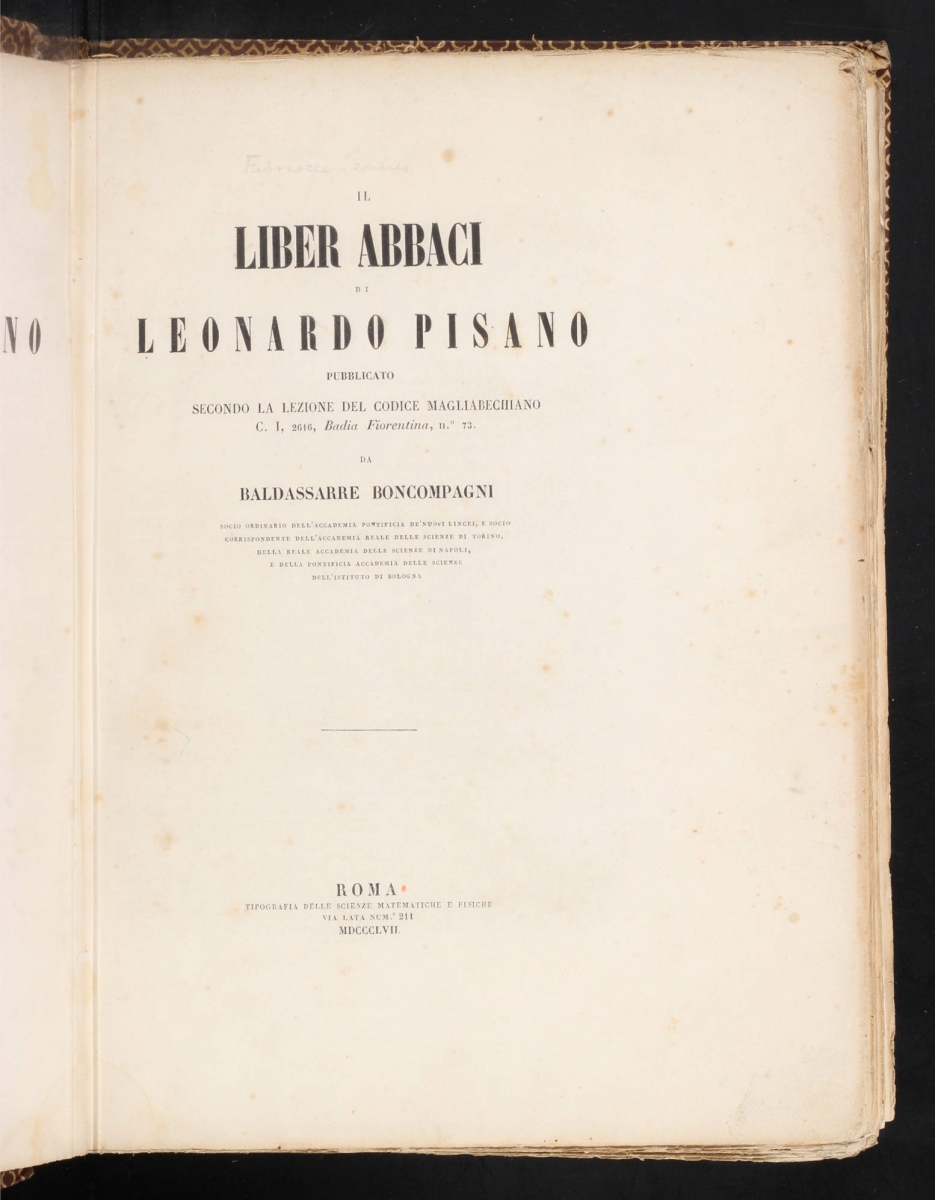
It is on page 2 that Fibonacci introduces the Hindu-Arabic numeration system.
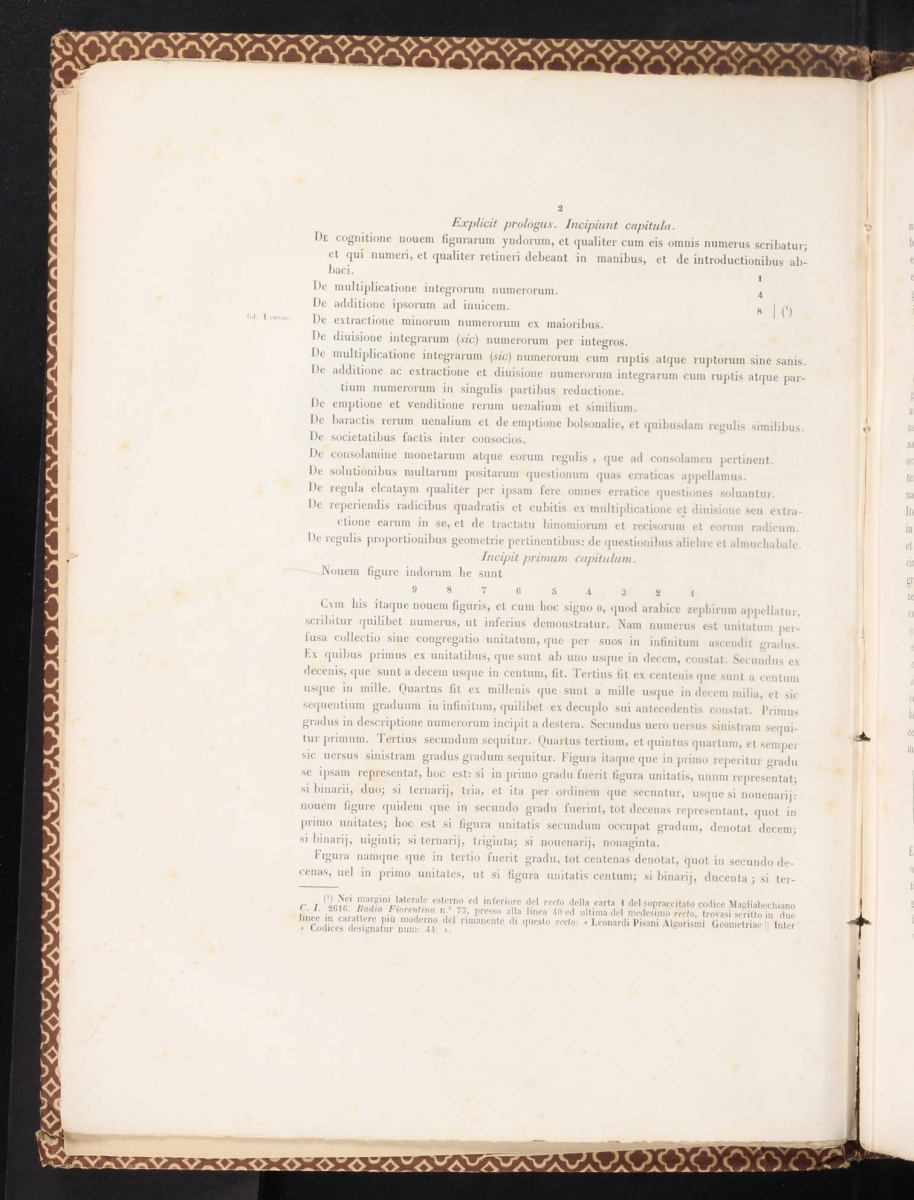
Here is a close-up of the middle of the page, at the beginning of the first chapter.

The Latin translates as “These are the nine figures of the Indians 9, 8, 7, 6, 5, 4, 3, 2, 1. And so, with these nine figures, and with the symbol 0, which is called zephyr in Arabic, whatever number you please can be written, as is demonstrated below.”
Fibonacci goes on to explain how to write Roman numerals with this “new” system, providing some examples in a table near the bottom of page 3.

Next he explains some algorithms for performing arithmetic with Hindu-Arabic numerals, and on page 6, there are some addition and multiplication tables.
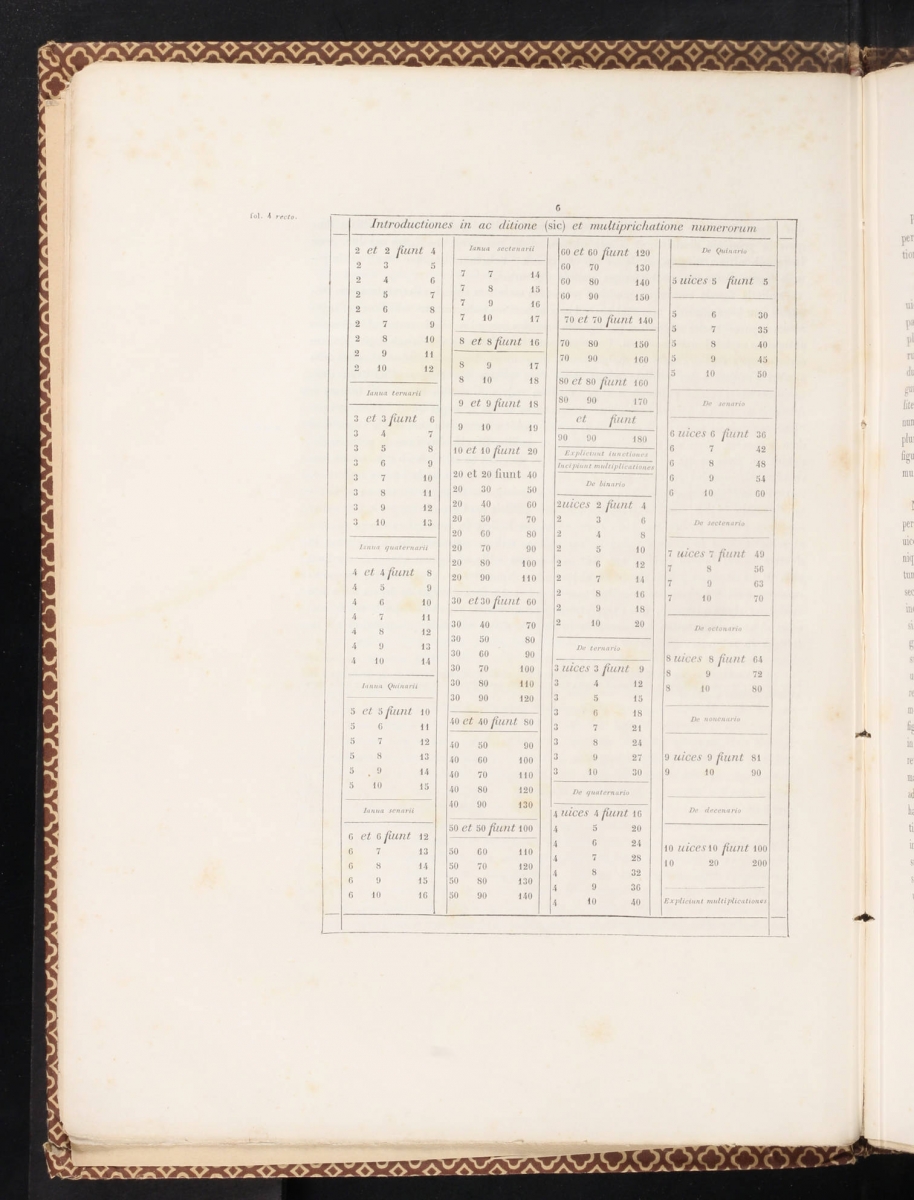
The infamous rabbit problem that led to what is now known as the Fibonacci sequence starts near the bottom of page 283 and continues on page 284. The Latin word for rabbit is “cuniculus.” Notice there is a typographical error in the section heading with the word “coniculorum” instead of “cuniculorum”.
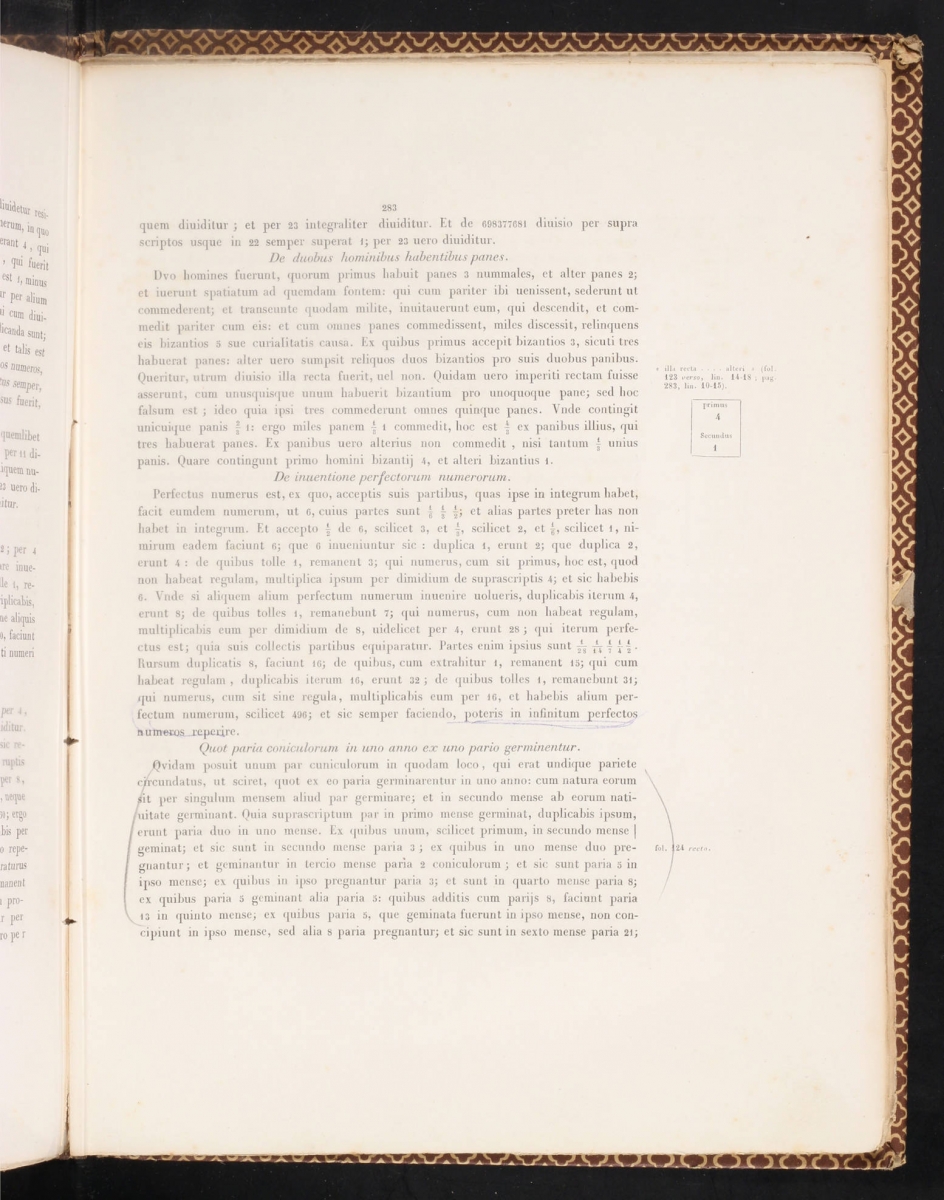
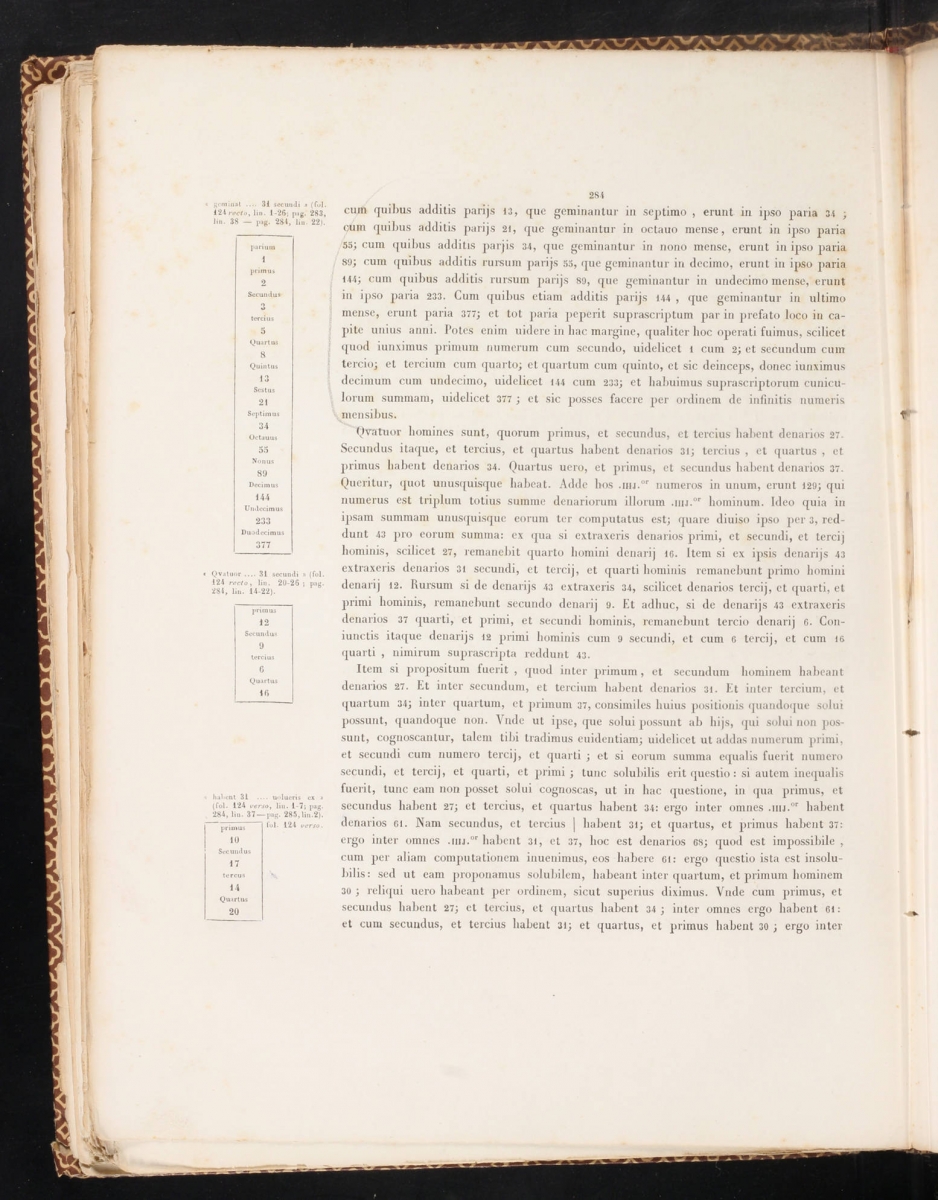
As mentioned above, there is an English translation of Liber Abaci available; both a hardcover and a softcover edition from Springer, which makes it convenient for those who don’t know Latin to still study this work by Fibonacci. In fact, the author used the 19th-century Boncompagni version for his translation.
A complete digital scan of Liber Abaci (call number QA32.F55) is available in the Linda Hall Library Digital Collections.
Images in this article are courtesy of the Linda Hall Library of Science, Engineering & Technology and used with permission. The Linda Hall Library makes available all existing digital images from its collection that are in the public domain to be used for any purpose under the terms of a Creative Commons License CC by 4.0. The Library’s preferred credit line for all use is: “Courtesy of The Linda Hall Library of Science, Engineering & Technology.”
References
O'Connor, J. J., and E. F. Robertson. “Leonardo Pisano Fibonacci.” MacTutor History of Mathematics Archive. https://mathshistory.st-andrews.ac.uk/Biographies/Fibonacci/.
Sigler, L.E. Fibonacci’s Liber Abaci (A Translation into Modern English of Leonardo Pisano’s Book of Calculation). Springer, 2002.
Vogel, Kurt. “Fibonacci, Leonardo, or Leonardo of Pisa.” In Dictionary of Scientific Biography, edited by C. C. Gillespie, iv:604–613. New York: Scribner, 1972.
“Fibonacci number.” Wikipedia. https://en.wikipedia.org/wiki/Fibonacci_number.